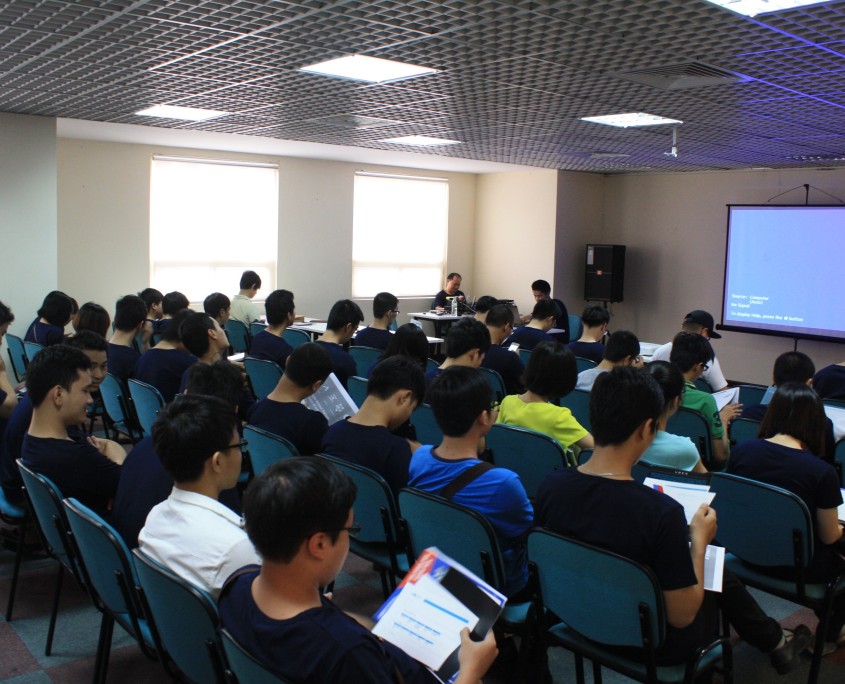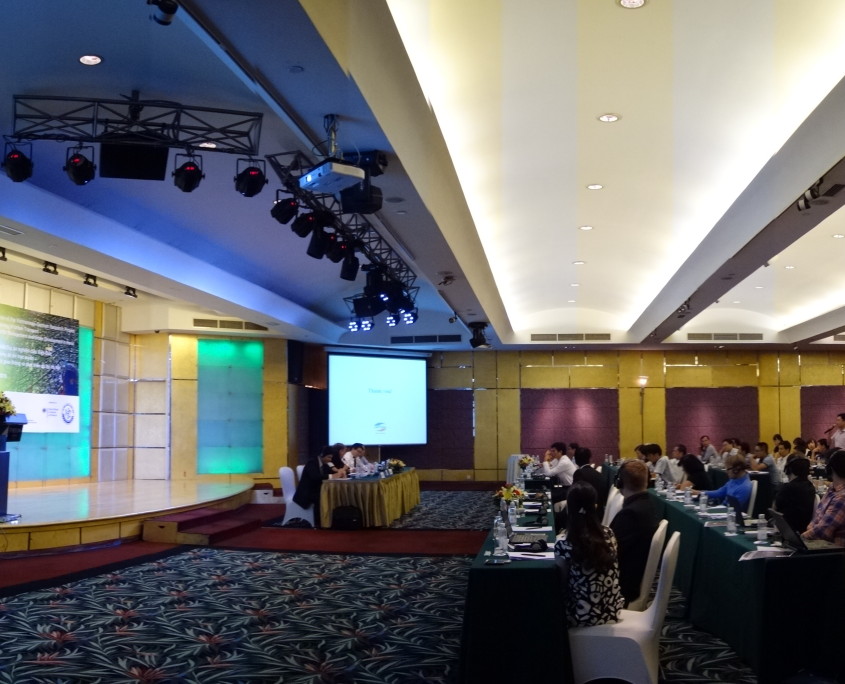Request For Vietnam Startups
READ THE COMPANION PIECE: “FROM A SUBSIDY TO A STARTUP ECONOMY“
AGRICULTURE
Vietnam accounts for more than a fifth of the global total of rice exports, it’s the world’s second largest exporter of coffee, and it’s also the second largest producer of pepper, making it an ideal prototyping arena for new farming techniques and technologies. Thus, AgriTech that is developed in Vietnam has the potential to be exported across other markets. For starters, how can crop yields be efficiently increased without over-farming existing land?
BRAND
Vietnam has a lot of potential to develop its international brand—it already has a strong reputation for IT outsourcing. Furthermore, the Vietnamese conical hat (known as nón là) has near-instant brand recognition. What’s the most effective way of enhancing Vietnam’s perception abroad?
CHALLENGES
Counterfeit goods, collusion (pricing), congestion (traffic and pollution), climate change effects in the Mekong Delta, gender imbalance, lack of transparency, etc. Pick an area; how can it be addressed?
COMMUNITY
Most of Vietnam’s major cities are made up of locals, foreigners, and Viet-Kieu but sometimes there isn’t much overlap among the English-teaching, business, diplomatic, freelancer, arts, and other communities. One idea: how to tap into these diverse groups of people and make it easier for people who want to move and contribute to Vietnam (or any country) to do so?
COLLABORATION
There are almost two million Vietnamese in the U.S. with approximately one million in California alone. Surprisingly, (to some) Vietnamese is the third most spoken language in Texas. Furthermore, there are overseas Vietnamese communities in France, Germany, Poland, Russia, and Australia. Already, many Vietnamese study abroad and second-generation Vietnamese have returned to Vietnam for work, study, or to live. Linking the diaspora back to Vietnam means benefits at home and abroad. How can these links be strengthened and deepened?
CONSTRUCTION
There are a number of high-rises under development in Ho Chi Minh City and buildings are constantly razed to make way for new ones in Hanoi. Vietnam builders have focused on high-end accommodations but the need is for middle to lower income housing. The pace of construction will only accelerate in the future but often construction sites are hazardous with lax safety measures, waste, delays and overages. Not to mention some badly designed features to begin with, which begets the question: can the industry begin to innovate?
COPIES
Vietnamese entrepreneurs, developers, and product managers might consider trying to copy more: copying best practices, successful models, and building up expertise to a point where they have mastered a skill, product, form, etc. Taking a proven business model in the region and localizing it to Vietnamese tastes and styles isn’t necessarily a bad idea—it lowers risk. What else could or should Vietnam copy?
DATA
Getting accurate data in Vietnam can sometimes be difficult. Collecting data and making decisions with it is a competitive advantage, given the right data. Depending on a particular industry, what kind of data should be collected to make the right decisions?
DEMOGRAPHICS
There are approximately one million babies born each year in Vietnam while people from rural areas continue to move into major cities. Moreover, people are living longer. What kind of services and care will they need that don’t exist yet?
DIGITAL
Paper is inefficient to store, whether it’s triplicate invoices or money. Finding a way of getting medical and other records into digital databases could be the beginning of a digital transformation in Vietnam. As a starting point, what can be stored digitally today?
EDUCATION
Vietnam needs to revamp its higher education system; more banking and finance majors in Vietnamese universities is not viable in the long term. The Vietnamese youth need to develop more critical thinking skills, more creative abilities, and more confidence in asking questions and executing tasks in order compete internationally. How can these skills be developed within and outside of the school system?
ENERGY
Vietnam’s largest source of electricity-generating capacity is from coal and this trend will continue well into this century. When might we see the emergence and mass adoption of renewable energies such as solar and wind as well as the development of smart homes, buildings, and cities?
FINANCE
FinTech is on the rise but credit card adoption rates are still low in Vietnam and access to loans for SMEs can be improved—perhaps via crowdfunding combined with better investment management tools. How can Vietnamese consumers adopt e-payments more quickly?
GOVERNANCE
Vietnam is a top-down country. However, within the country’s political system, it is experimenting with e-governance in places like Da Nang in an effort to improve public services, e.g., legal process standardization and optimization. Along this theme, how can citizens positively engage the government for everyone to benefit?
HEALTH
Digital health, animal health, BioTech. More specifically, cardiology, oncology, women’s health, opthamology, radiology, intervention, supplements, anti-counterfeit, and general awareness, prevention, and treatments that are developed in Vietnam for a (presumably) lower cost than they would be in the developed world have the potential to outcompete similar solutions in other markets. Not to mention growing diabetes, asthma, and chronic illnesses in Vietnam’s youth and elders. Pollution and divorce is on the rise as well. Getting ahead of the curve: what will be the biggest health concern in five years in Vietnam and do solutions exist for it yet?
INFRASTRUCTURE
With metro projects coming online in both Ho Chi Minh City and Hanoi, we may see an alleviation of traffic congestion in both cities. On the other hand, obtaining a car is the new Vietnamese dream and rush hour is already near-gridlock in major Vietnamese cities. How can Vietnam design and execute smart urban planning?
LOGISTICS
Last-mile distribution is still a huge challenge with distribution channels and supply chains that have not yet been streamlined, affecting almost every sector. In its current state, what is the best way to aggregate demand, capture data, and process payments within the logistics and shipping infrastructure?
REAL ESTATE
Renting in Vietnam can be a mixed experience but it is sometimes not economical to buy a home. More and more inventory is coming online—is there a way to optimize under-utilized real estate units until they are sold?
SDGS
See UN Sustainable Development Goals.
SMES
Small and Medium-sized Enterprises are the backbone of the economy and will continue to be as SOE reforms and equitization are accelerated in order to give space to SME growth. New digital tools are a start but how can SMEs compete better, go abroad more easily, and reduce the risk of doing so?
TECHNOLOGY
This is essentially doing more or the same with less, i.e., finding international products and producing them for 30% of the retail cost and 65% of the feature set so that technology sharing across Vietnam and around the (developing) world can flourish. Which product to start with?
TOURISM
Approximately eight million people visit Vietnam every year; this industry has been in decline for months and it’s partly related to customer service—it can be improved, especially in northern Vietnam. Training, language skills, and anticipating customers’ needs are all in short supply. How can three-star hotels deliver three star (international) experiences?
TRADE
The Trans-Pacific Partnership (TPP), formation of the ASEAN Economic Community (AEC), EU-Vietnam, Eurasian Economic Union (EEU) and approximately 10 other Free Trade Agreements (FTAs)—how can Vietnam maximize these opportunities and move up the value chain?
WILD CARDS
Artificial Intelligence, Machine Learning, Natural Language Processing, Neural Networks, Quantum and Cognitive Computing, Robotics, Moonshots, etc. What is Vietnam in a position to develop via the sheer will of researchers?
YC
See the original Request For Startups.
YOUR IDEAS
No one has a monopoly on good ideas—what are yours?
YOUTH
The future of Vietnam can sometimes be in flux between traditional parenting forces and the desire for modernity. Developing content that the youth can relate to on the topic of careers, life lessons, relationships, and etiquette advice across social media and applications could help to ease the transition to adulthood. More importantly, what are their hopes and dreams for Vietnam in this century?













































